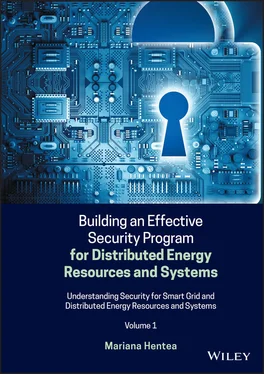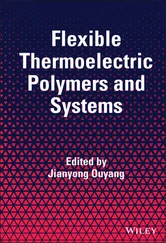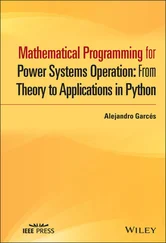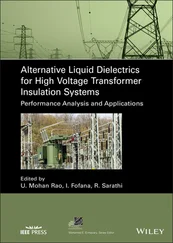1 ...8 9 10 12 13 14 ...36 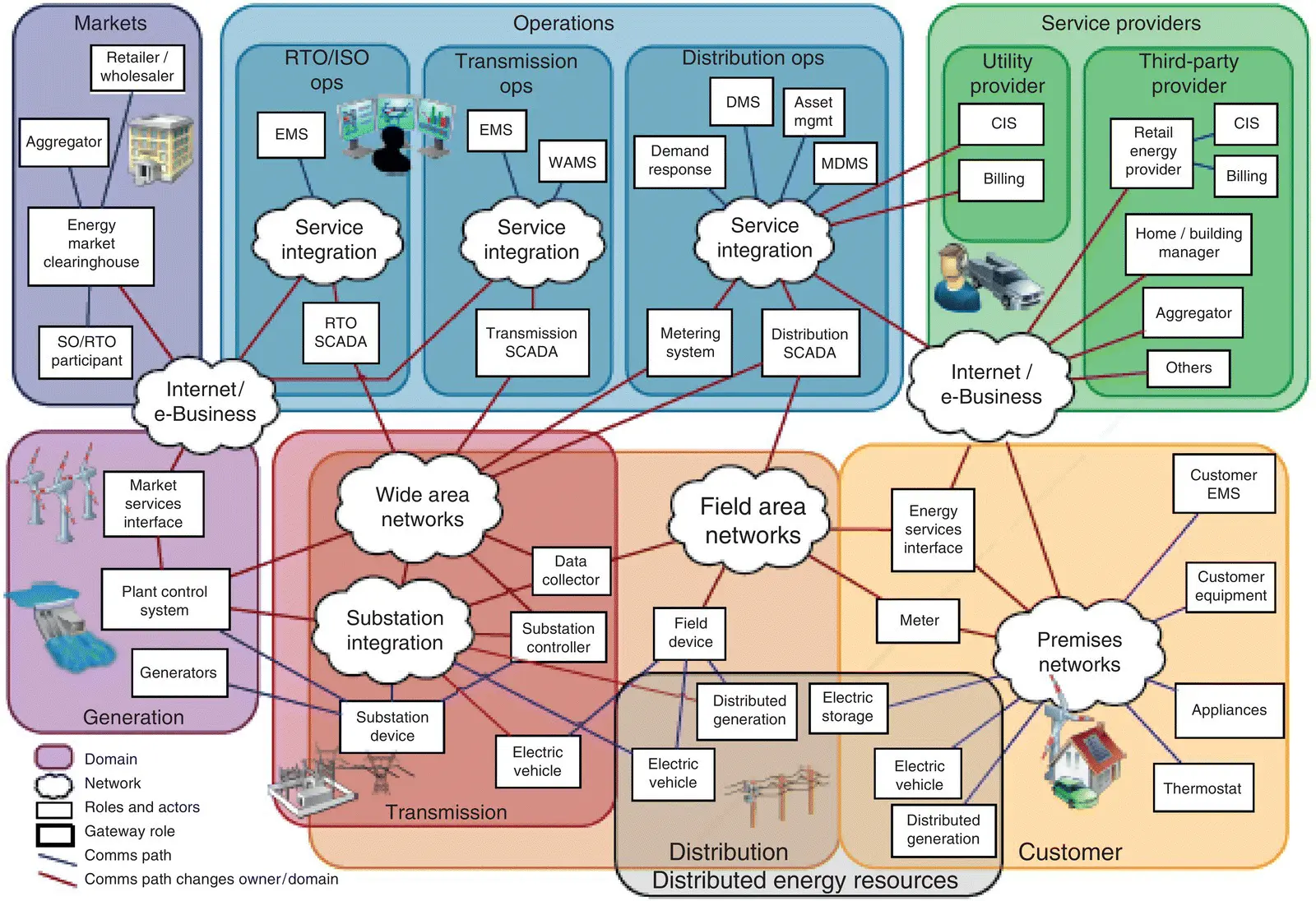
Figure 1.10 Legacy application types within NIST conceptual domains.
Source: [NISTIR 7628].
Public Domain.
Smart Grid consists of many different types of networks, not all of which are shown in the diagram. The Smart Grid is a network of many systems and subsystems, as well as a network of networks. That is, many systems with various ownership and management boundaries are interconnected to provide end‐to‐end services between and among stakeholders as well as between and among intelligent devices.
The communication infrastructure includes different types of networks, technologies, and services that are organized based on criteria such as geography, topology, business purpose, technology, ownership, etc. Understanding these networks is crucial to perform analysis of requirements for security and quality of service considerations.
The networks include the enterprise bus that connects control center applications to markets and generators and with each other; wide area networks that connect geographically distant sites; field area networks that connect devices, such as intelligent electronic devices (IEDs) that control circuit breakers and transformers; and premises networks that include customer networks as well as utility networks within the customer domain. These networks may be implemented using public (e.g. the Internet) and nonpublic networks in combination. Both public and nonpublic networks require implementation and maintenance of appropriate security and access control to support the Smart Grid.
Given that the Smart Grid will not only be a system of systems but also a network of information networks, a thorough analysis of network and communications requirements for each network is needed. This analysis should differentiate among the requirements pertinent to different Smart Grid applications, actors, and domains.
Figure 1.11illustrates a general architecture for Smart Grid communication infrastructure, which includes home area networks (HAN), business area networks (BAN), neighborhood area networks (NAN), data centers, and substation automation integration systems.
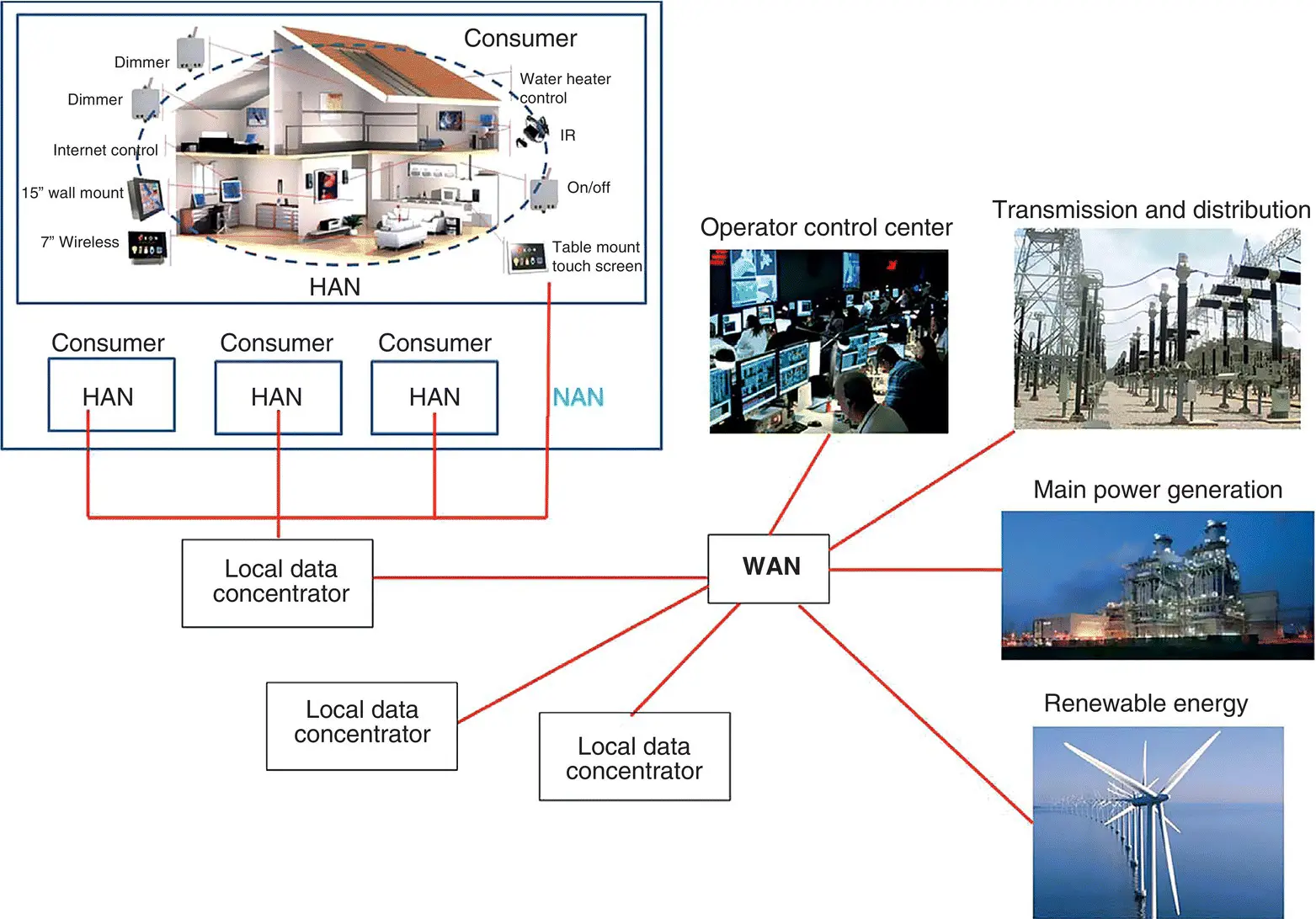
Figure 1.11 Smart Grid communication infrastructure.
Source: [Baimel 2016]. Licensed under CC BY 4.0.
As illustrated in this pictorial view, the authors of this work [Baimel 2016] summarize the communication infrastructure of the Smart Grid as based on three types of networks to include HAN, NAN, and WAN described as follows:
HAN is deployed and operated within a small area (tens of meters), usually a house or a small office; HAN has relatively low transmission data rate compared with other two networks, hundreds of bits per second (bps). In a typical implementation, a HAN consists of a broadband Internet connection that is shared between multiple users through a wired or wireless modem. It enables the communication and sharing of resources between computers, mobile, and other devices over a network connection. In Smart Grid implementation, all smart home devices that consume energy and smart meters can be connected to HAN. The device‐based data is acquired and transmitted through HAN to the smart meters. HAN allows more efficient home energy management. HAN can be implemented by ZigBee or Ethernet technologies.
NAN is deployed and operated within area of hundred meters, which is actually a few urban buildings. Several HANs can be connected to one NAN, and they transmit data of energy consumed by each house to the NAN. The NAN delivers this data to local data centers for storage. This data storage is important for charging the consumers and data analysis for energy generation demand pattern recognition. The NAN has up to 2 Kbps transmission data rate. The NAN can be implemented by PLC, Wi‐Fi, and cellular technologies.
WAN is deployed and operated within vast area of tens of kilometers and consists of several NANs and local distribution companies (LDCs). LDC is a distribution company that maintains the portion of the utility supply grid that is closest to the residential and small commercial consumer. Moreover, the communication of all Smart Grid’s components, including operator control center, main and renewable energy generation, transmission and distribution, is based on WAN. The WAN has very high transmission data rate up to few Gbps. The WAN can be implemented by Ethernet networks, WiMAX, 3G/LTE, and microwave transmission.
Several published research works are focused on Smart Grid communication infrastructure. This work [Chen 2010] presents a communication infrastructure for Smart Grid based on hierarchical electricity distribution. The power system is typically hierarchical and is divided by functional areas depending on the voltage levels. These levels are the transmission network, the high/middle voltage (HV/MV) substations, the MV distribution network, the MV/LV transformer substations, and the low voltage (LV) network.
This work [Yan 2013] approaches Smart Grid communication infrastructure as a system of systems that is extremely complex. As a consequence, modeling, analysis, and design of a suitable communication infrastructure should meet many new challenges. The models to be used must be capable of accounting for uncertainty as a way to simulate emerging behavior. The control system and particularly communication infrastructure must be designed to manage uncertainty and inconsistencies to be resilient or gracefully degrade when necessary. Finally, the performance metric must be adjusted to the new nature of the power system.
The authors of this work [Yan 2013] explore the challenges for Smart Grid system. Since a Smart Grid system may have over millions of consumers and devices, the demand for reliability and security is extremely critical. Through a communication infrastructure, a Smart Grid can improve power reliability and quality to eliminate electricity blackout. Security is a challenging issue since the ongoing Smart Grid systems are facing increasing vulnerabilities as more and more automation, remote monitoring, controlling, and supervision entities are interconnected. The authors argue that a Smart Grid built on the technologies of sensing, communications, and control technologies offer a very promising future for utilities and users. Summarizing the basic requirements of communication infrastructure in Smart Grid paradigm highlights that efficiency, reliability, and security of interconnected devices and systems are critical to enabling Smart Grid communications.
However, sensors can be used in many Smart Grid applications, but their limitations and challenges need to be accounted. For example, sensors for substation condition motoring can be simple or complex, depending on the parameters to be monitored and monitoring techniques for transformer condition monitoring. Sensors are also used on other power equipment such as surge arresters, circuit breakers, instrument transformers, capacitor banks, station batteries, etc. While there are benefits of using the sensor technology, there should be a strategy how to use in a secure way.
There should be an understanding of the benefits and challenges of several technologies that are currently available to be used for Smart Grid implementation. This work [Baimel 2016] provides a brief introduction on the advantages and disadvantages of some common technologies used for Smart Grid communication infrastructure:
Читать дальше
